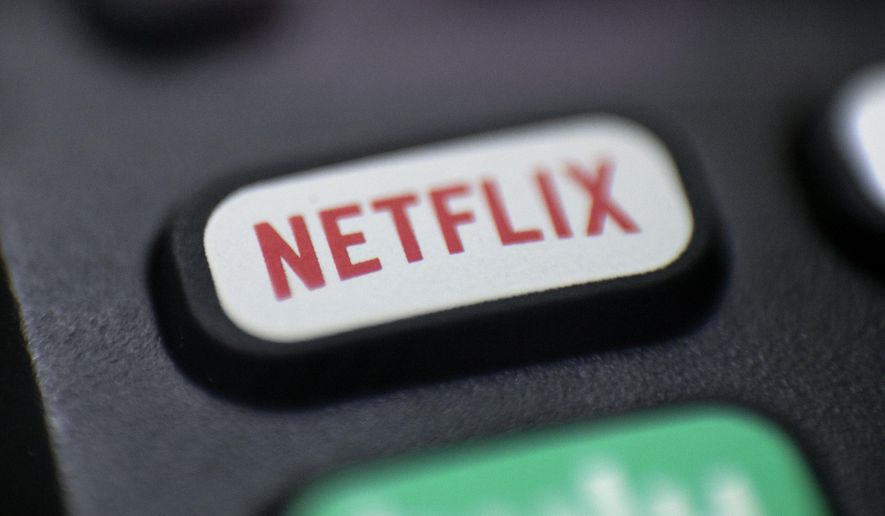SAN FRANCISCO — Netflix suffered its first subscriber loss in more than a decade, causing its shares to plunge 25% in extended trading amid concerns that the pioneering streaming service may have already seen its best days.
The company’s customer base fell by 200,000 subscribers during the January-March period, according to its quarterly earnings report released Tuesday It’s the first time that Netflix’s subscribers have fallen since the streaming service became available throughout most of the world outside of China six years ago. The drop this year stemmed in part from Netflix’s decision to withdraw from Russia to protest the war against Ukraine, resulting in a loss of 700,00 subscribers.
Even so, Netflix acknowledged its problems are deep-rooted by projecting a loss of another 2 million subscribers during the April-June period.
If the stock drop extends into Wednesday’s regular trading session, Netflix shares will have lost more than half of their value so far this year - wiping out about $150 billion in shareholder wealth in less than four months.
Netflix also lost 800,000 subscribers in 2011 after it unveiled plans to begin charging separately for its then-nascent streaming service, which had been bundled for free with its traditional DVD-by-mail service. The customer backlash to that move elicited an apology from Netflix CEO Reed Hastings for botching the execution of the spin-off.
The service also saw a decline in U.S. subscribers in 2019.
But the latest subscriber loss was far worse than a forecast by Netflix management for a conservative gain of 2.5 million subscribers. The news deepens troubles that have been mounting for the streaming since a surge of signups from a captive audience during the pandemic began to slow.
It marks the fourth time in the last five quarters that Netflix’s subscriber growth has fallen below the gains of the previous year. Now investors fear that its streaming service may be mired in a malaise that has been magnified by stiffening competition from well-funded rivals such as Apple and Walt Disney.
The setback follows the company’s addition of 18.2 million subscribers in 2021, its weakest annual growth since 2016. That contrasted with an increase of 36 million subscribers during 2020 when people were corralled at home and starved for entertainment, which Netflix was able to quickly and easily provide with its stockpile of original programming.
Netflix has previously predicted that it will regain its momentum, but is now starting to acknowledge that it’s mired in a serious malaise that requires action. Among other things, Netflix signaled that it will likely crack down on the sharing of subscriber passwords that has enabled multiple households to access its service from a single account.
The Los Gatos, California, company estimated that about 100 million households worldwide are feeding off the same account, including 30 million in the U.S. and Canada - its largest market. To stop the practice and prod more people to pay for their own accounts, Netflix indicated it may expand a test introduced last month in Chile, Peru and Costa Rica that allows subscribers to add up to two people living outside their households to their accounts for an additional fee.
“Account sharing as a percentage of our paying membership hasn’t changed much over the years, but, coupled with the first factor, means it’s harder to grow membership in many markets - an issue that was obscured by our COVID growth,” Netflix said Tuesday in a letter to its shareholders.
Netflix ended March with 221.6 million worldwide subscribers.
With the pandemic easing, people have been finding other things to do, and other video streaming services are working hard to lure new viewers with their own award-winning programming. Apple, for instance, held the exclusive streaming rights to “CODA,” which eclipsed Netflix’s “Power of The Dog,” among other movies, to win Best Picture at last month’s Academy Awards.
Escalating inflation over the past year has also squeezed household budgets, leading more consumers to rein in their spending on discretionary items. Despite that pressure, Netflix recently raised its prices in the U.S., where it has its greatest household penetration - and where it’s had the most trouble finding more subscribers. In the most recent quarter, Netflix lost 640,000 subscribers in the U.S. and Canada, prompting management to point out that most of its future growth will come in international markets.
Netflix also is trying to give people another reason to subscribe by adding video games at no extra charge - a feature that began to roll out last year.




Please read our comment policy before commenting.